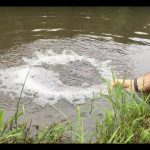Creating a Beautiful and Functional Acre Pond
If you have ever dreamed of having your own private oasis, building an acre pond on your property could be the perfect solution. Not only does it add natural beauty to the landscape, but it also provides a habitat for wildlife and can be a source of relaxation and recreation. In this comprehensive guide, we will explore the step-by-step process of building an acre pond, from planning and excavation to stocking and maintenance.
Planning and Preparation
Before breaking ground, careful planning is essential to ensure the success of your pond project. Start by researching local regulations and obtaining any necessary permits. Consider the location of the pond in relation to your home, taking into account factors such as sunlight exposure, views, and accessibility. Additionally, think about the purpose of the pond. Will it be primarily for aesthetic appeal, fishing, swimming, or wildlife habitat? This will help determine the size, shape, and depth of the pond.
Excavation and Construction
Once the planning phase is complete, it’s time to bring your vision to life. The first step in building an acre pond is excavation. This involves removing the topsoil and shaping the basin of the pond. Depending on the soil conditions, you may need heavy machinery such as excavators and bulldozers to complete this phase. It’s important to carefully consider the depth of the pond, taking into account local water tables and the needs of the aquatic ecosystem.
Water Source and Liner Installation
After the excavation is complete, you’ll need to establish a reliable water source to fill the pond. This could be a natural spring, well water, or rainwater collection system. Once the water source is secured, the next step is to install a durable liner to prevent seepage and maintain water levels. Options for pond liners include clay, bentonite, and synthetic materials such as EPDM rubber or PVC. The choice of liner will depend on factors such as soil composition, climate, and budget.
Aeration and Filtration
Proper aeration and filtration are crucial for maintaining a healthy aquatic environment. Aeration helps to circulate the water, prevent stagnation, and provide oxygen to aquatic life. This can be achieved through the use of aerators, fountains, or waterfalls. Additionally, a well-designed filtration system will help remove debris, algae, and other contaminants, keeping the water clear and balanced. Natural filtration methods such as wetlands or planted zones can also be incorporated into the pond design.
Landscaping and Vegetation
To enhance the natural beauty of the pond and create a thriving ecosystem, consider adding aquatic plants and landscaping features. Water lilies, lotus, and other aquatic plants not only add visual appeal but also provide habitat for fish and wildlife. Incorporating rocks, boulders, and native vegetation around the pond’s perimeter can help blend the pond seamlessly into the surrounding landscape. These natural elements also provide shelter and breeding areas for wildlife.
Stocking and Maintenance
Once the pond is established, the final step is to stock it with fish and other aquatic life. Before introducing any species, it’s important to research the specific needs and compatibility of different fish and plants. Common pond fish species include largemouth bass, bluegill, catfish, and trout. Regular maintenance is essential for keeping the pond healthy and beautiful. This includes monitoring water quality, controlling algae, and managing aquatic vegetation. Periodic dredging may also be necessary to remove sediment and maintain the desired depth of the pond.
Benefits of an Acre Pond
Building an acre pond offers a wide range of benefits, both aesthetic and practical. From a recreational standpoint, a pond provides opportunities for fishing, swimming, and boating. It can also serve as a tranquil retreat for relaxation and meditation. In addition to the recreational aspects, a well-designed pond can increase property value and attract wildlife, creating a balanced ecosystem.
Conclusion
Creating an acre pond is a rewarding and fulfilling project that can enhance the beauty and functionality of your property. From the initial planning stages to the final stocking and maintenance, each step of the process contributes to the overall success of the pond. By carefully considering factors such as location, size, and ecosystem needs, you can create a stunning and sustainable aquatic feature that will be enjoyed for years to come. Whether you envision a peaceful fishing spot, a natural swimming hole, or a vibrant wildlife habitat, building an acre pond allows you to bring your outdoor oasis to life.




